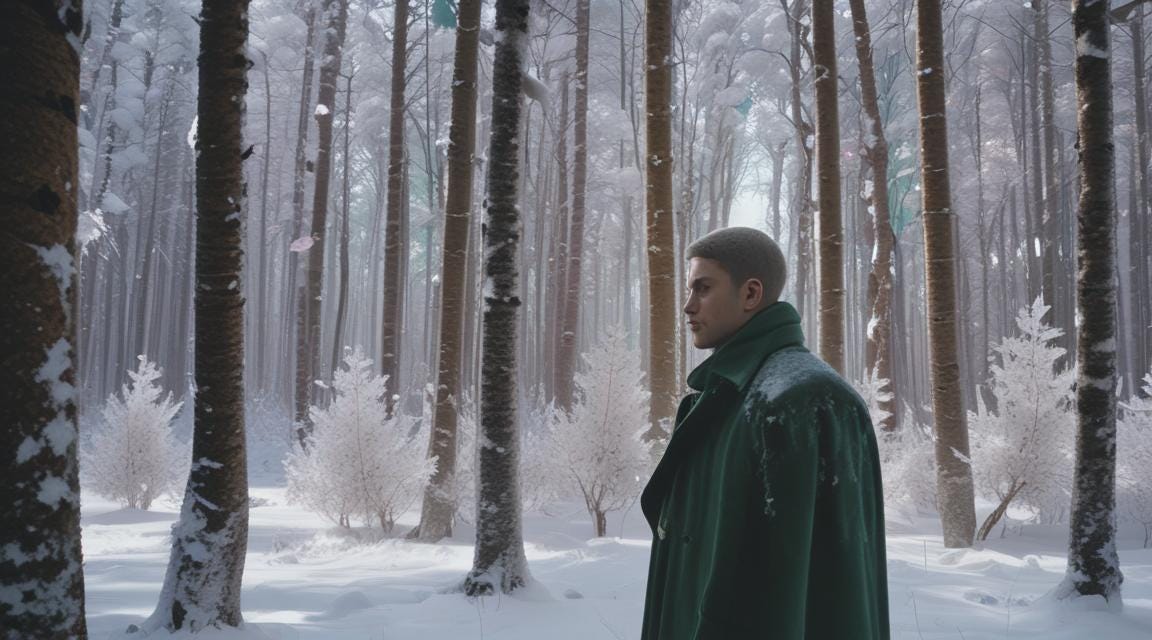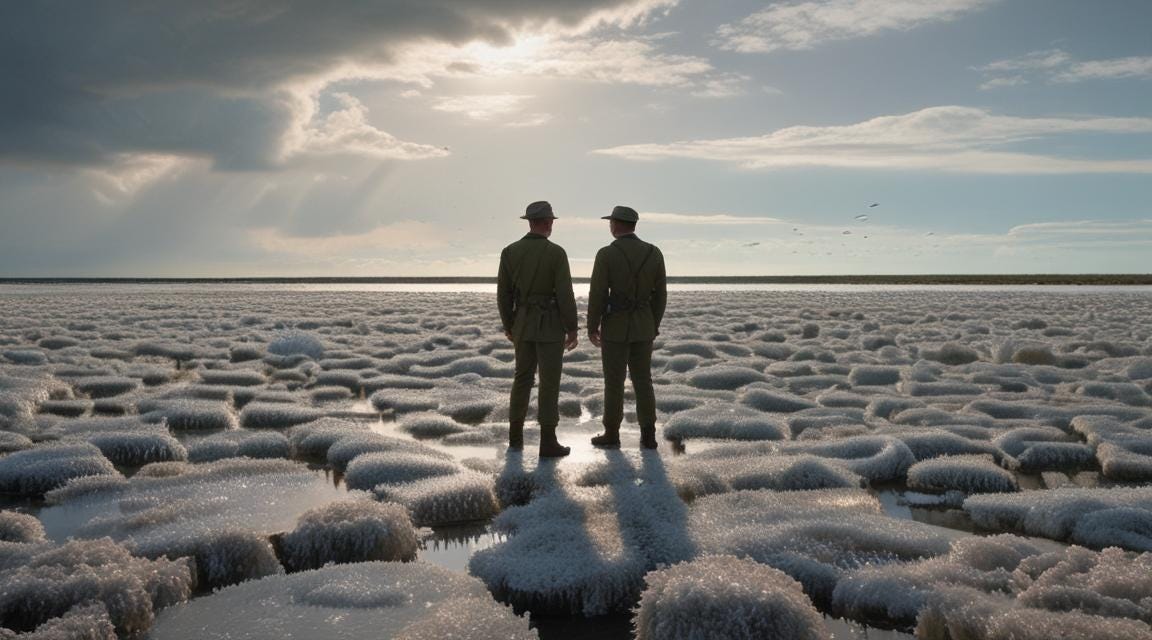
Every now and then, I read a science fiction novel that I want to recommend to my friends who have very literary tastes. I read a lot of literary fiction in addition to all of this science fiction and it’s always nice to read a science fiction novel that is also most definitely literary fiction. Today’s novel, J G Ballard’s 1966 ecological apocalypse The Crystal World is one of those science fiction novels. This is not the first Ballard novel I’ve read: I read High-Rise around the time the movie came out and Concrete Island during the early months of the pandemic. Neither of those two novels is really science fiction, but they are both very strange novels with features that would be quite at home in a science fiction novel — both were novels that could only be written by a writer who dipped their toes into science fiction. They were also quite well-written. I was not an English major and while I have faith in my ability to recognize good writing, I often struggle to explain why it is good writing. If I had to explain what I mean, it wold be that I find myself reading more slowly so that I can savor every sentence and that I’m kind of sad to finish the book because that means there’s nothing left to read. And sometimes, I’m a bit upset to leave the characters behind. That was my reaction to The Crystal World.
The novel’s premise is that for some reason, forests and wetlands are crystalizing. The novel is set in Matarre Cameroon, where the jungle is crystalizing, but the same thing is happening in the Everglades and the Pripyat Marshes in the Soviet Union. Unlike the United States and the Soviet Union, Cameroon’s government does not have the resources to seal off the area in an attempt to contain it and so our characters are able to travel into the crystalizing area and see the process for themselves. One of the downsides of an apocalypse is that it’s usually ugly. Roman ruins are pretty and romantic, but the ruins of a modern apocalypse are going to be piles of trash and crumbling buildings with snapped 2x4s, protruding fiberglass insulation, crumbling vinyl siding and asphalt shingles flapping in the wind. If we’re lucky we can get an Ailanthus tree poking out of the rubble. In contrast, forests turning into crystals sounds absolutely stunning. Becoming crystalized within the forest is a much better way to go than radiation sickness in a city reduced to rubble — and partway through the novel we learn that scientists predict that eventually the entire surface of the planet will become crystalized.
The premise is quite unusual (thankfully the book was published before New Age crystal healing took off) and an enthralling plot. As with his other novels, it’s well written. His language also sets a clear awe-struck but sad mood. The reader can easily create a mental image of this dangerous but beautiful area. For instance, here is his description of what the main character sees while rambling thorough the forest “Above, through the lattices that stretched across the glade, he could see the fractured bowl of the moon. Around him, in the vitreous walls, the reflected stars glittered like fire-flies.” Those two sentences and they made me want to visit that imaginary forest even if it might have trapped me forever in crystals. I am not alone; our main characters keep returning to the forest as if it has some sort of hold on them.

We meet a military doctor named Radek at the edge of the crystalizing area. He’s in charge of a camp full of scientists and military members there to study the phenomenon. It’s from him that the reader learns about the other sites and he’s rather skeptical of the the Soviets’ chances of understanding it:
“The Soviet team is under the leadership of Lysenko. As you can imagine, he is wasting the Russians’ time. He believes that non-inherited mutations are responsible, and that because there is an apparent increase in tissue weight, crop yields can also be increased.”
Later on, our main character, a Dr. Sanders, finds him partially crystalized in the forest. Sanders pulls the crystals away, straps Radek to a log and puts him down the river in the hopes that it will remove the crystallization and he will float down to one of the settlements downriver. When he later encounters Radek, the man is desperately trying to get back to the crystalized forest. Though he can talk, he seems more like an animal trying to make its migration than a human with free will. Being trapped in the crystals has changed him. So what is this crystallization process? That’s not something the reader ever knows for certain. One character claims that it’s a virus because viruses are just crystals. This sort of makes sense; even though most people’s mental image of a virus is the T4 bacteriophage, most viruses are icosohedral or helical and crystalizing viruses is an important technique in microbiology. If you look at an illustration of a virus, it looks a lot like a crystal. Another character states that it has something to do with the Hubble Effect and by extension, the redshift. It’s not clear how this would have triggered the crystallization process, but the cause of the phenomenon is irrelevant to the story. Even if scientists eventually discover the cause, that doesn’t mean that they will have a way of stopping it. Leaving its cause ambiguous works well — it’s more disturbing if we don’t understand its cause.
I finished the novel over a month ago and since then, I’ve been thinking about the crystallization apocalypse. There are some science fiction novels that are just straightforward adventure stories and if the world suddenly turns into rocks, that’s just the plot and not a stand in for something like the threat of nuclear war. Even though the The Crystal World isn’t one of those simple adventure stories, I don’t think that there is any deep symbolism in the encroaching crystallization. It is simply a slow-moving, beautiful and utterly terrifying phenomenon. I have been thinking about how Ballard chose to set the novel in Cameroon rather than the Florida Everglades, the Pripyat Marshes or some other rich or middle income country and how fundamentally different the novel would have been if it had been set in a wealthier country. The Soviets would, of course, keep it quiet and perhaps the Americans would try, though keeping something like that secret in the US would be nearly impossible given that we are a nation of loudmouths who do not tolerate government secrecy. In 1966, Cameroon was newly-independent and not at all wealthy country and still a place where there could be some mystery. As one might expect, this is also a novel about decolonization.
Our main character Dr Sanders is a British physician traveling to Cameroon to work at a leprosy clinic run by physician couple. The husband is an old friend of Sanders and the wife was once his lover. To reach them, he must travel down the river (at one point the boat is attacked, just like in The Heart of Darkness) to an isolated town called Matarre. On his way, he meets a journalist named Louise there to report on the forest and pops in and out of the novel and is often the voice of reason. There is also a priest who has lost his faith. Finally, we have a British architect named Ventress and and American mine owner named Thorensen who are fighting over a young woman dying of tuberculosis. They are quite literally fighting — they each have henchmen and attack one another over and over again. Back in the US or Europe, they’d be quickly arrested prosecuted, but in Cameroon they can get away with it. Here it is hard not to find parallels with Joseph Conrad’s Heart of Darkness; the movie Apocalypse Now was based on the novel if you’re not interested in reading the book. Sanders and Louise board a riverboat sailing into the jungle. In this case, they’re there to see the crystalized jungle and become entangled in the fight between Ventress and Thorensen because they are also Anglophones from rich countries. Now that much of the area has been abandoned, they are free to continue to fight to the death. There is only one African character, a henchman of Thorensen’s named Kagwa. He’s an intelligent man, smarter than either his boss or Ventress, but he’s stuck in the situation. At one point in the novel, Sanders tries to convince him to leave Thorensen’s employ, but he stays. Then there is the wife in the physician couple. She has contracted Leprosy and goes walking in the forest for hours on end and she’s not the only one doing this; groups of lepers, who have nowhere to go now that the leper colonies have shut down, also wander about in the forest.
Most classic science fiction apocalypses are about a sudden cataclysmic event: an asteroid, a plague, nuclear war (one would hope that the combatants stop detonating nukes once most of the planet’s surface is reduced to rubble), alien invasions, atomic monsters attacking cities. There aren’t as many slow-moving catastrophes. And yet the most important environmental threat of the day is climate change. One of the things that makes it so insidious is that it isn’t sudden, it happens so slowly that it’s not something you notice unless you look at temperature trends over long periods of time. The apocalypse in The Crystal World is similarly slow moving and I think this is part of what makes it such a compelling novel today. A slow moving apocalypse is more frightening because it’s easily to ignore as it slowly creeps up on the world.
Ballard also wrote literary fiction and at the risk of sounding like snob, The Crystal World could be considered literary fiction. The focus is less on the crystal jungle and more on the inner lives of the characters who enter it. Sanders is a realistic and compelling character. I wanted to know what happened after the book ended: did the world find a way to stop it? What is it like to become one with the crystalized forest? This is a fascinating novel full of ambiguity. It’s beautifully written and a joy to read. It’s also a fascinating early example of an ecological apocalypse, written before we recognized the threat of climate change, the loss of the ozone layer (on track to recover), or Persistent Organic Pollutants. It may even be a natural process; there aren’t many science fiction novels about natural ecological catastrophes being written today. My only complaint is that Ballard’s oeuvre isn’t larger because eventually I will have read all of his work.




